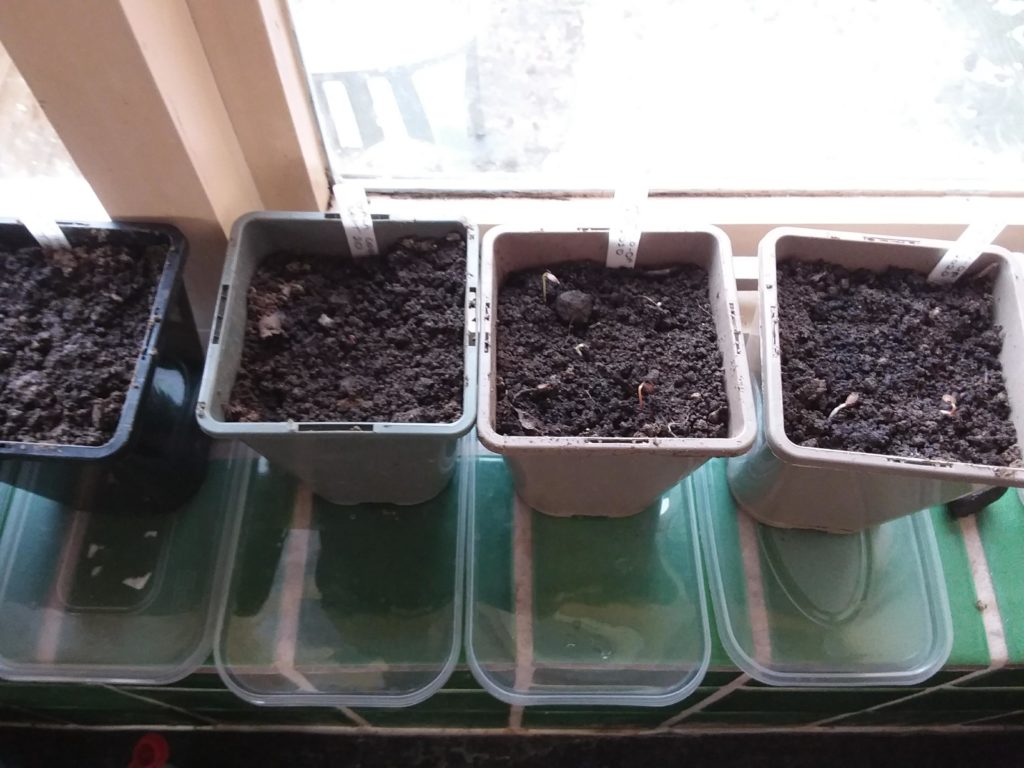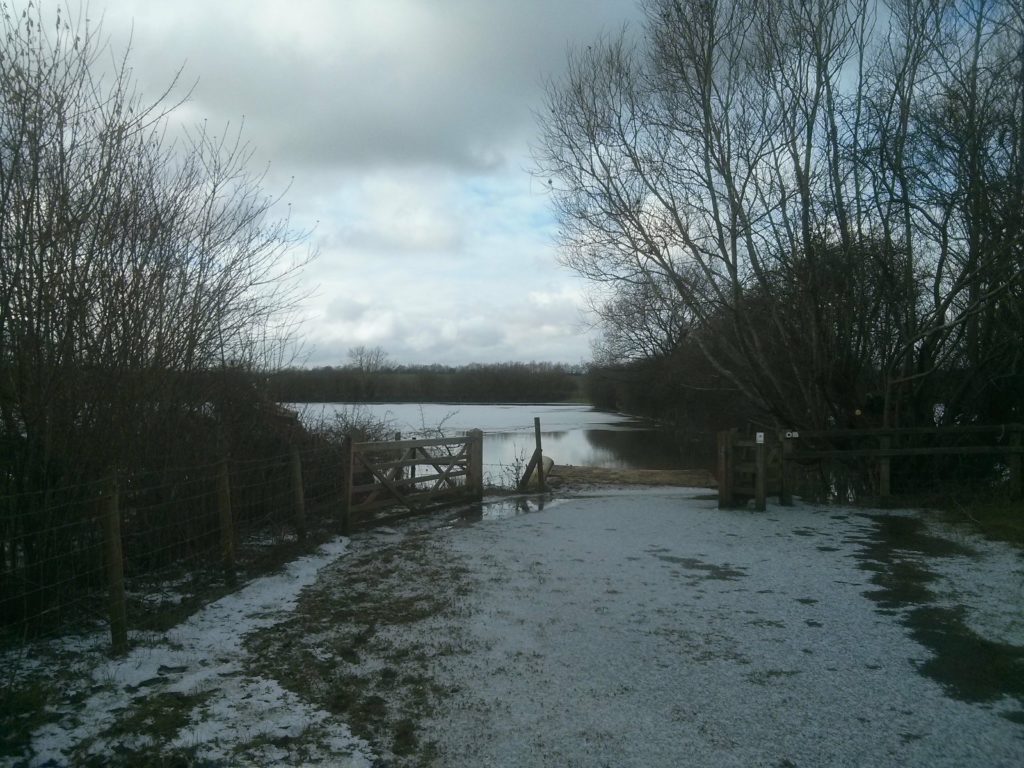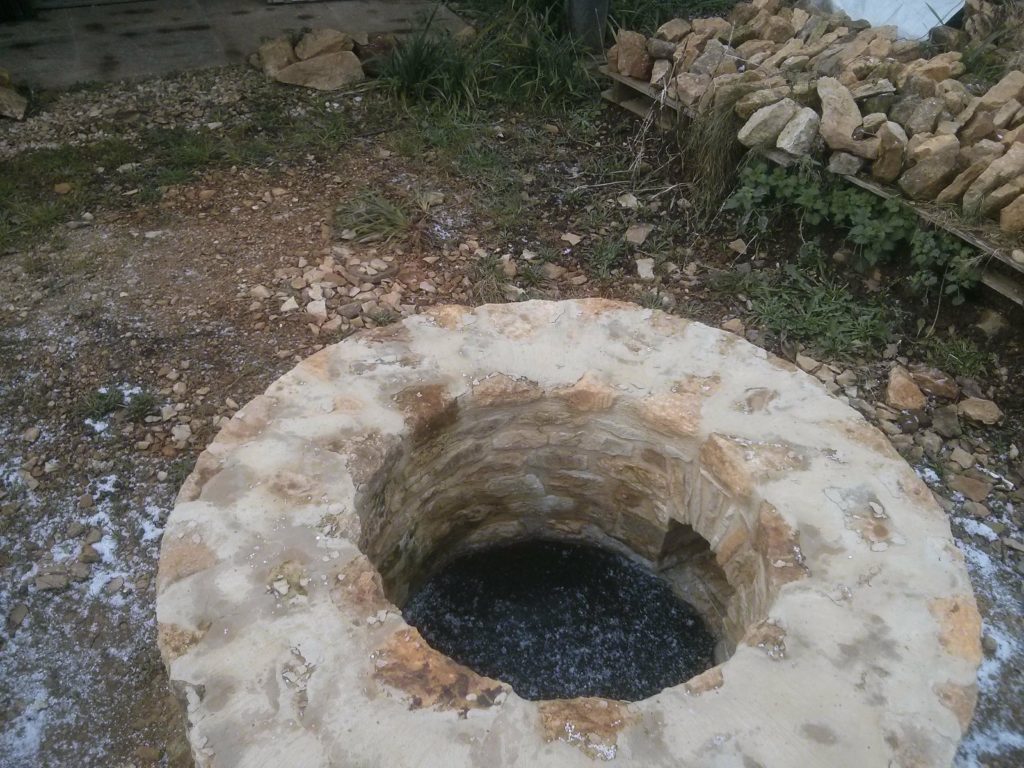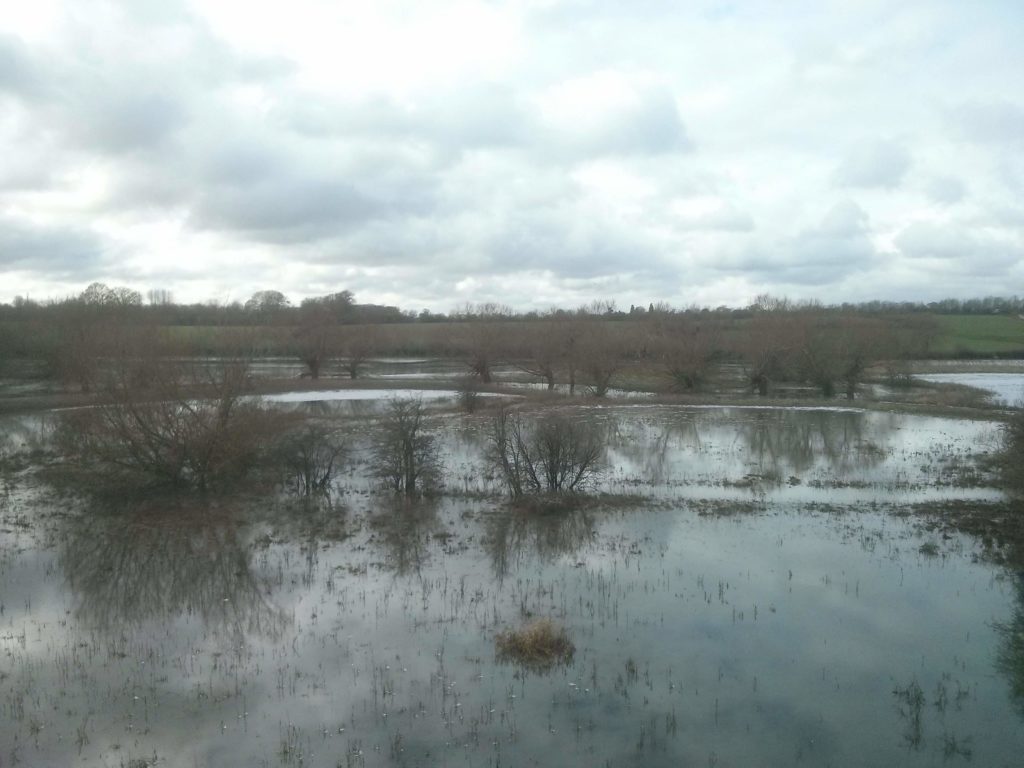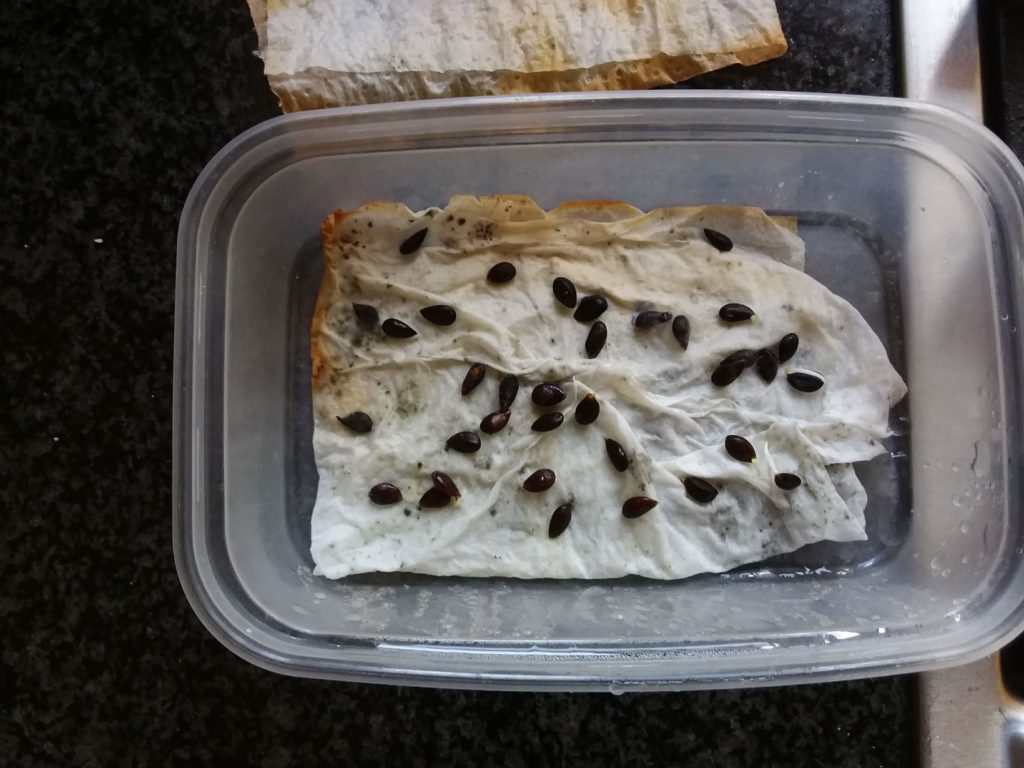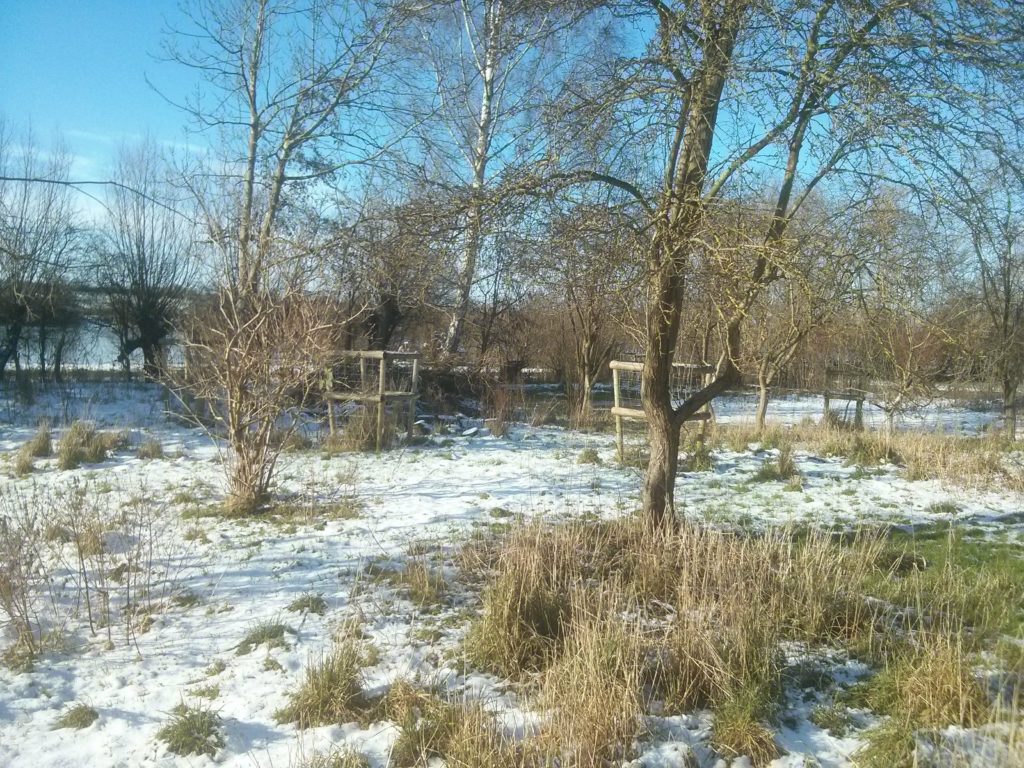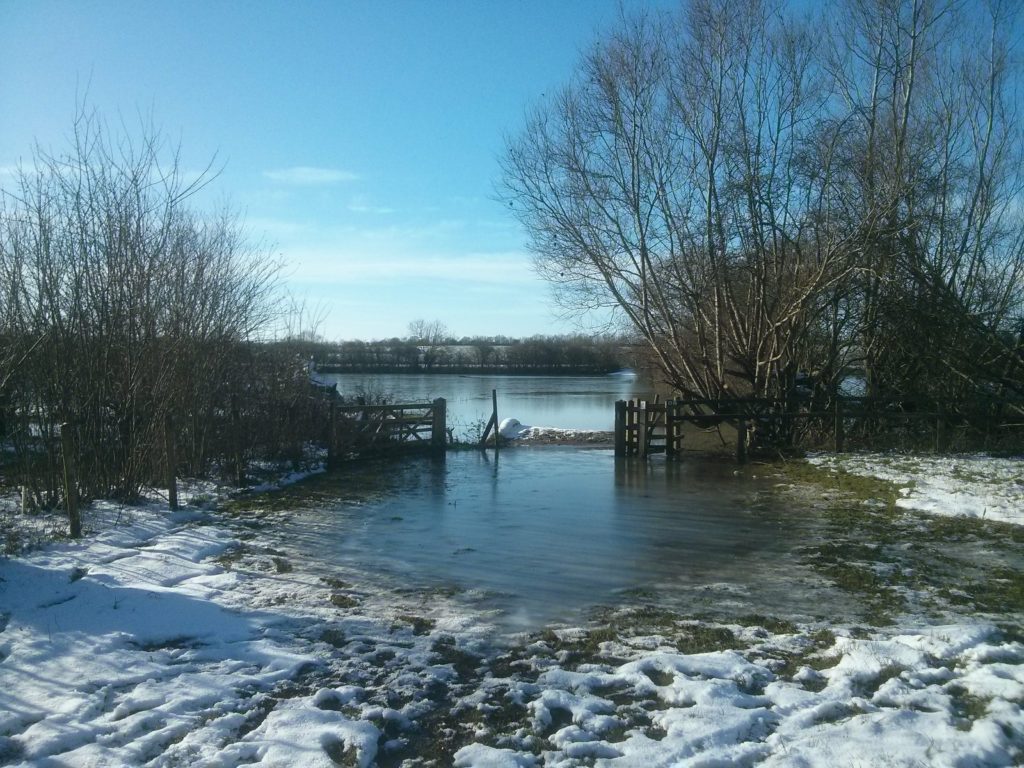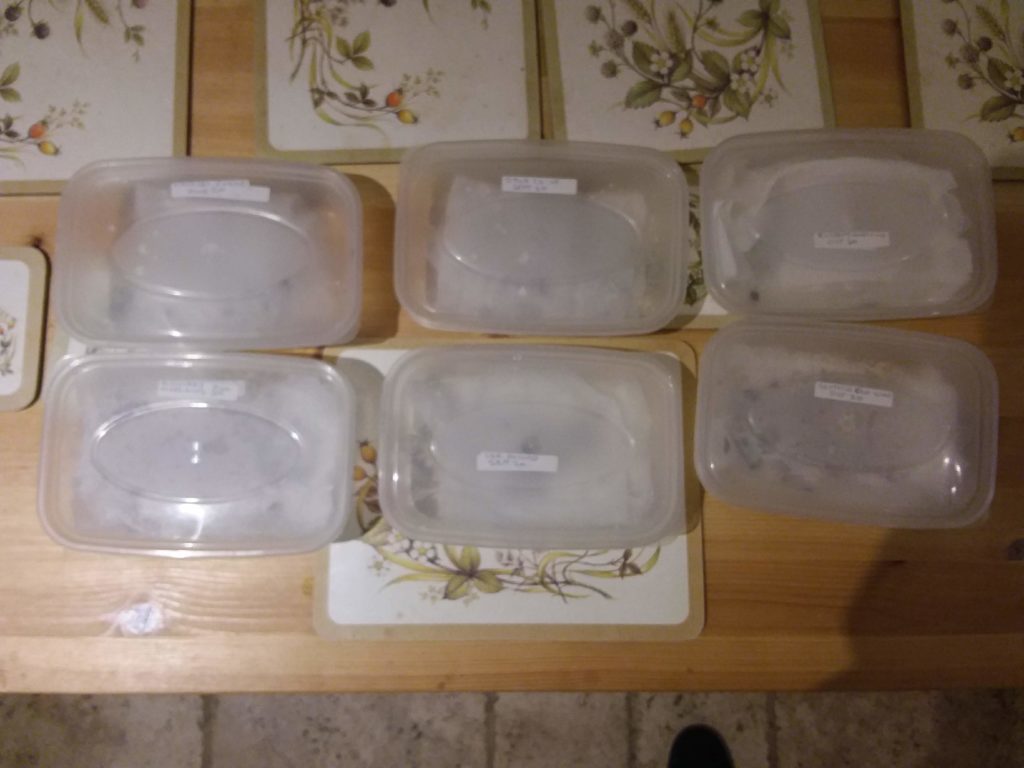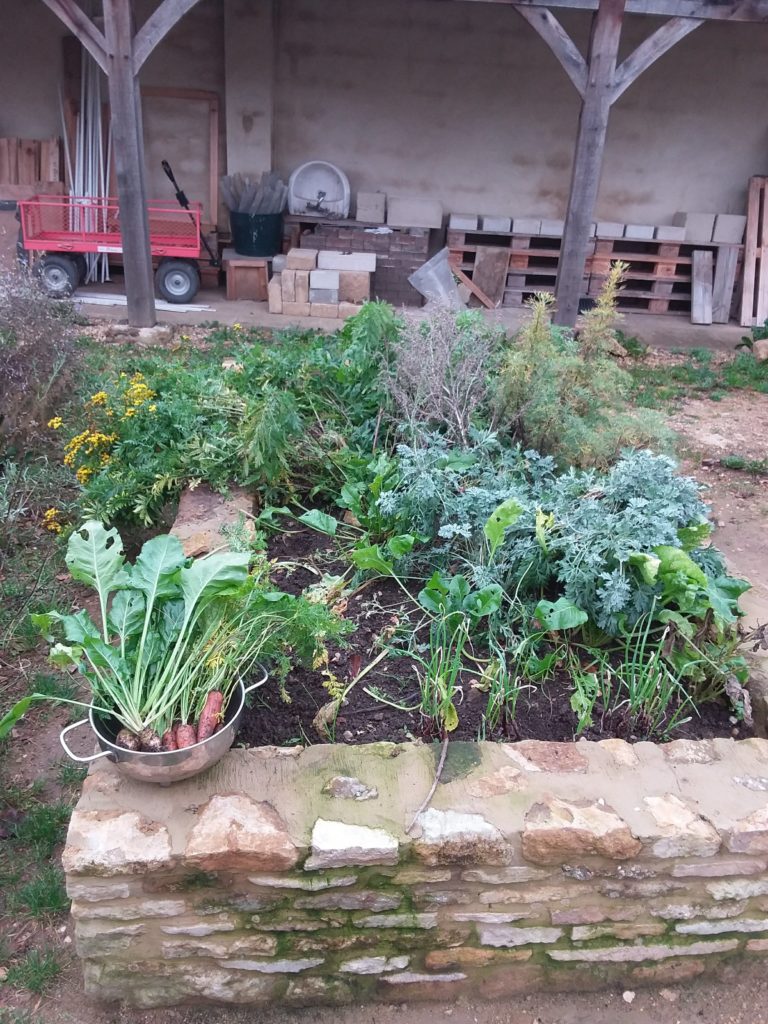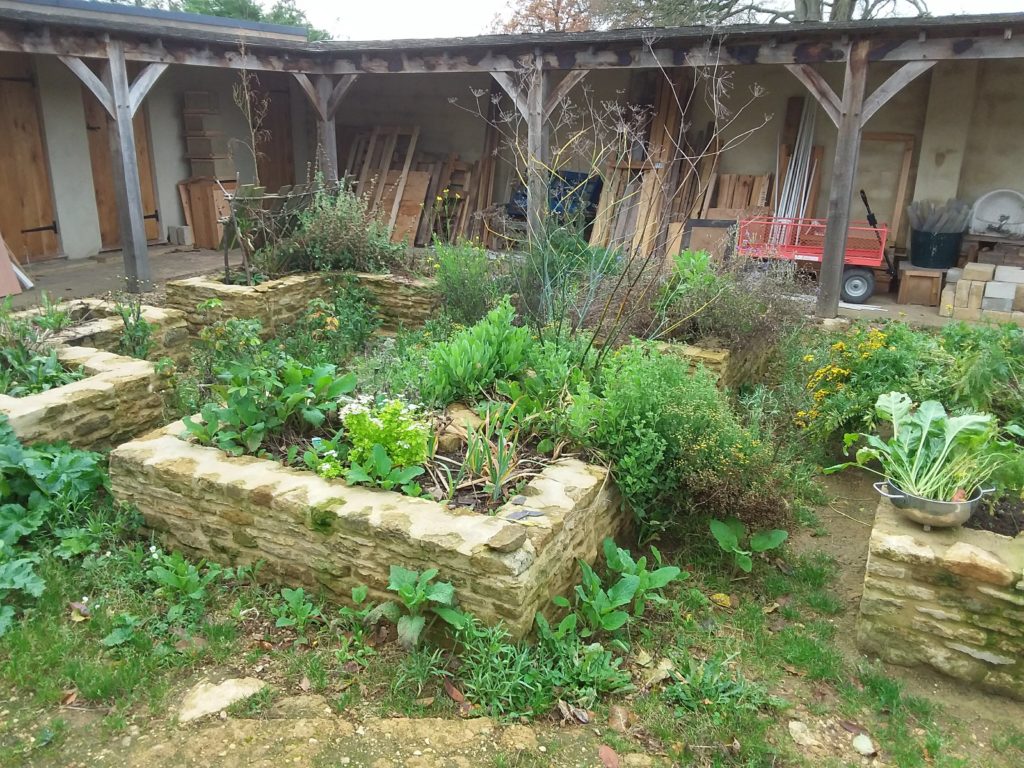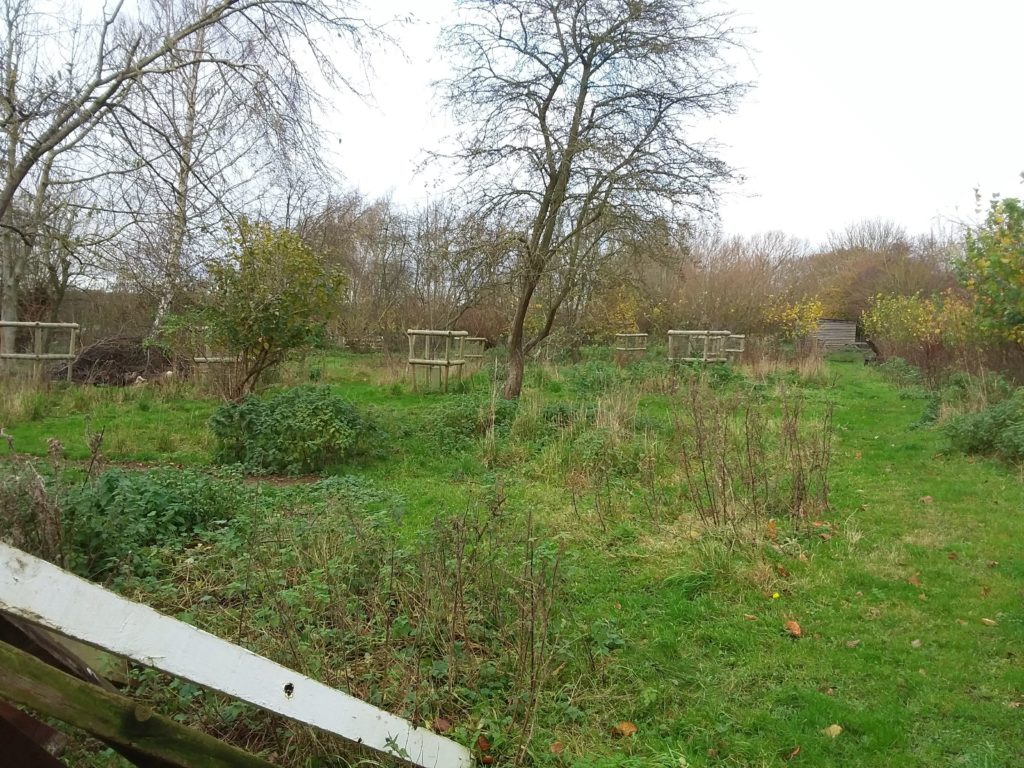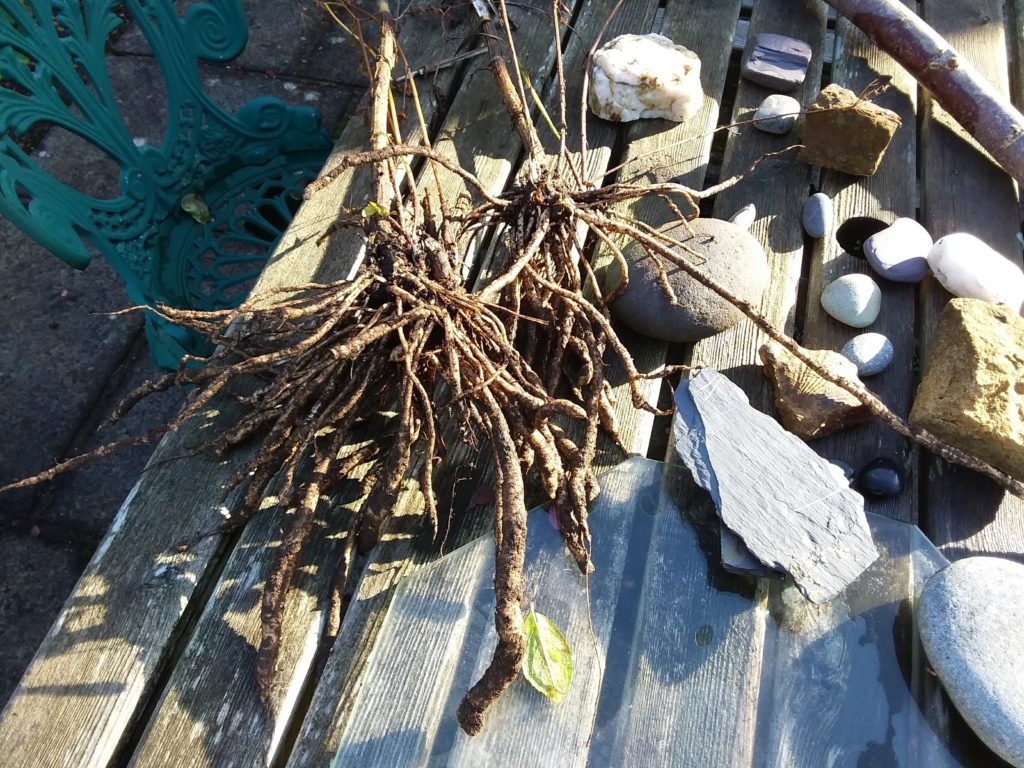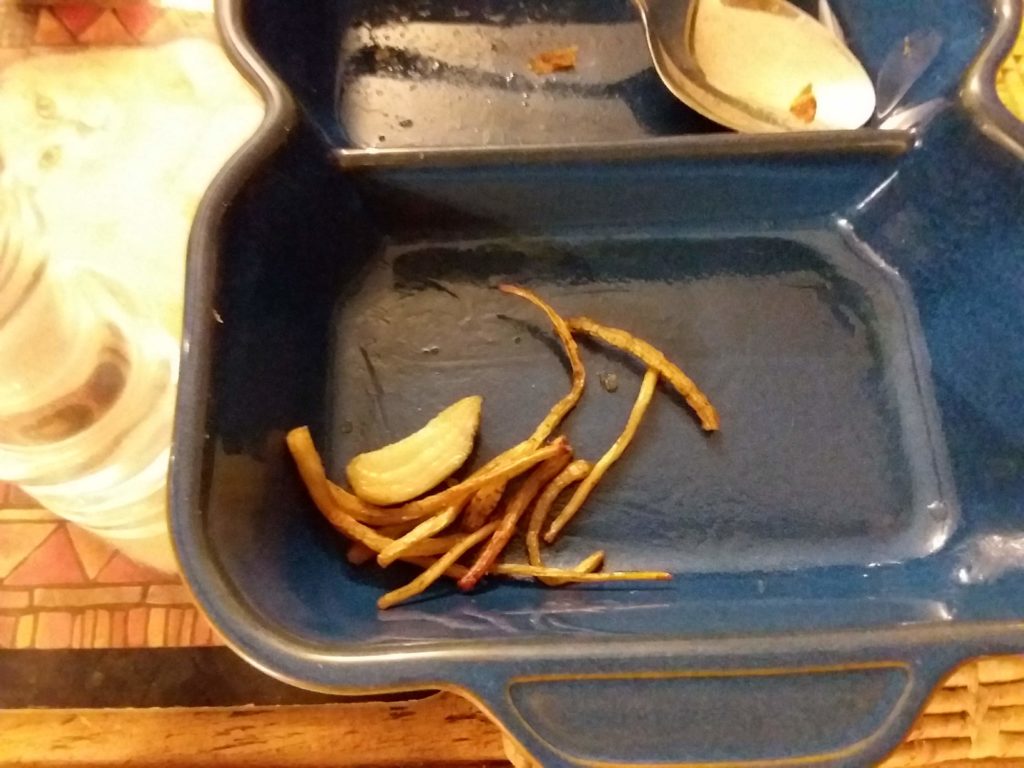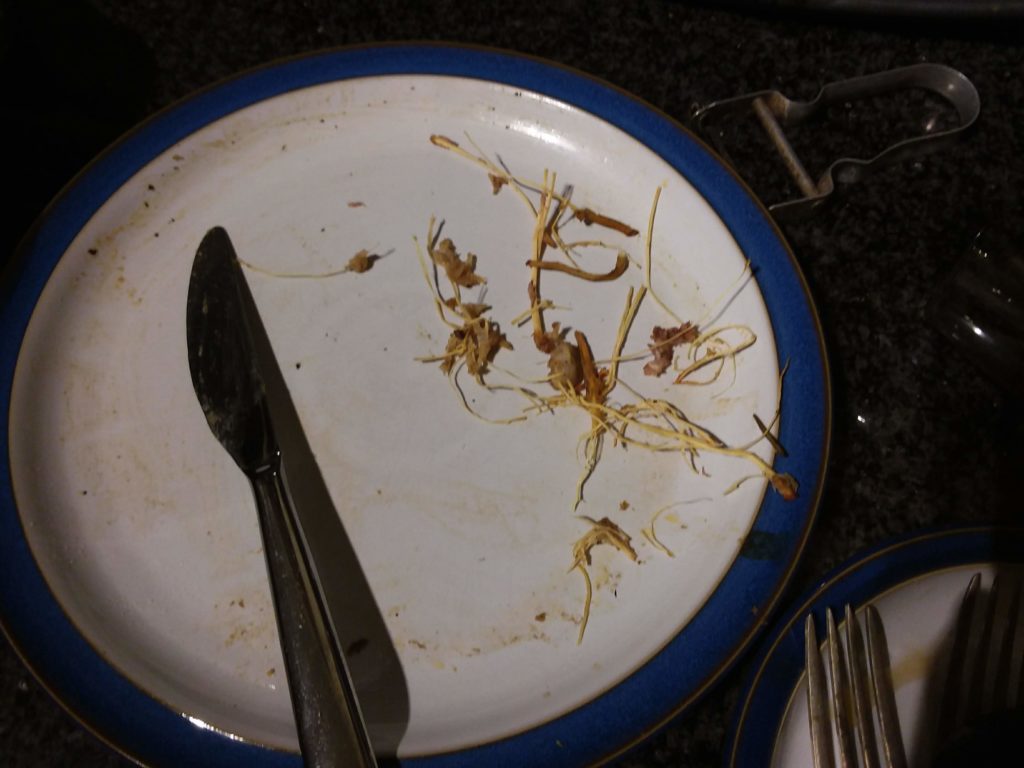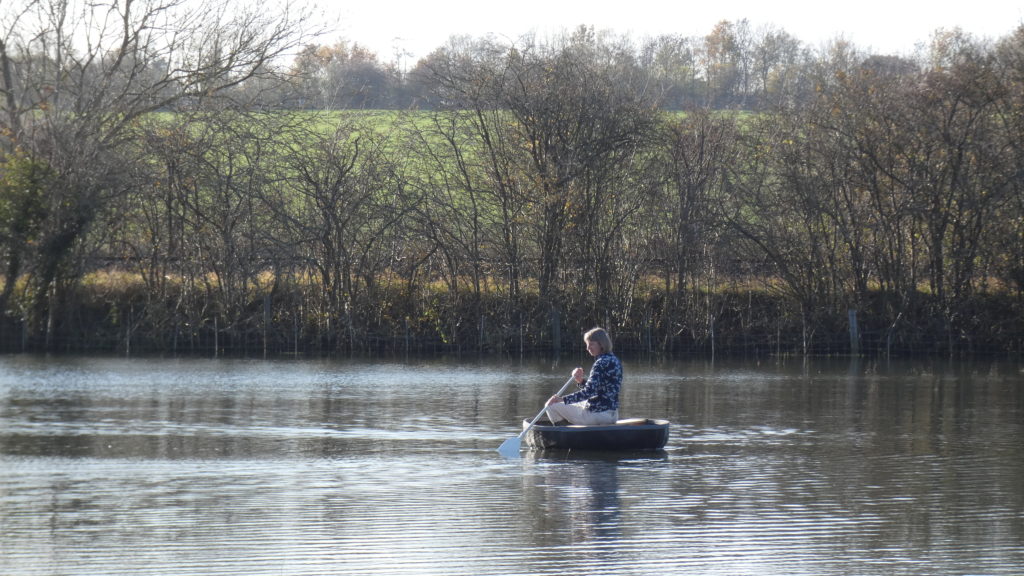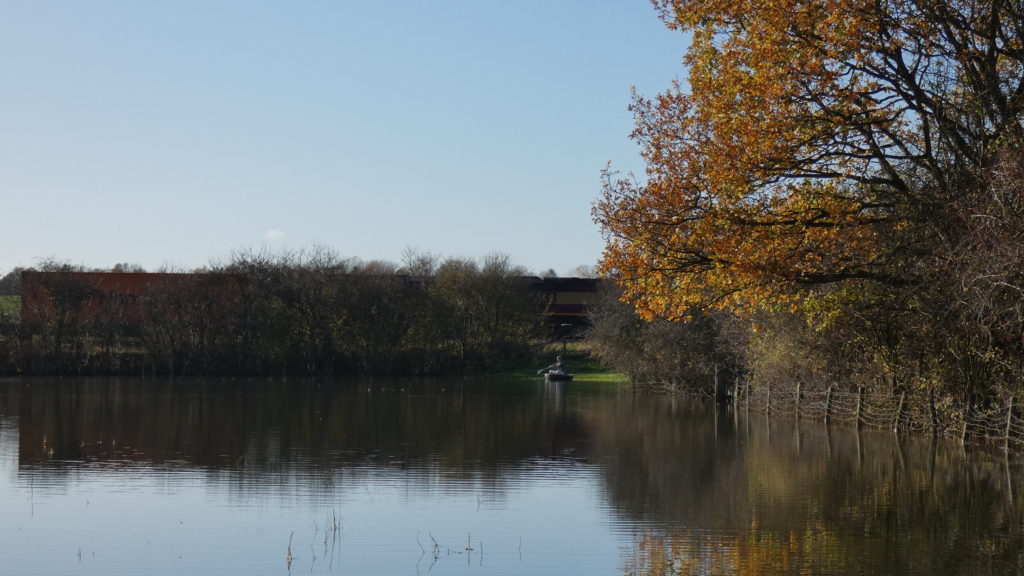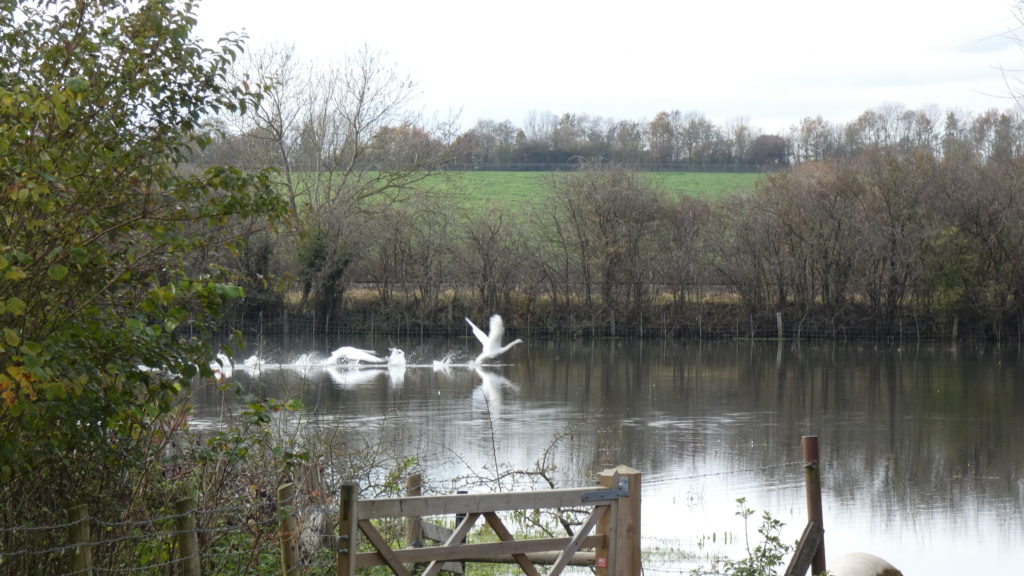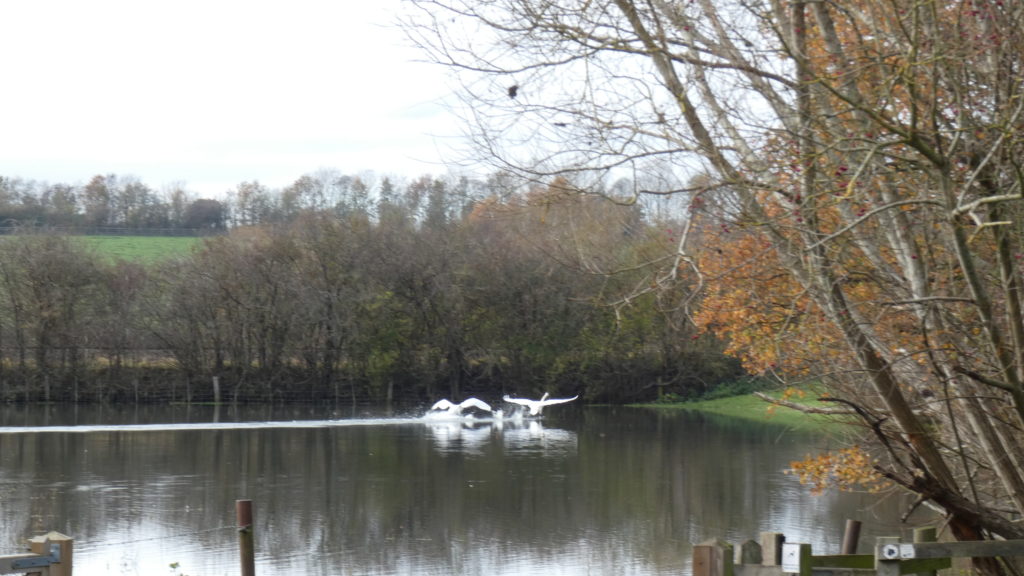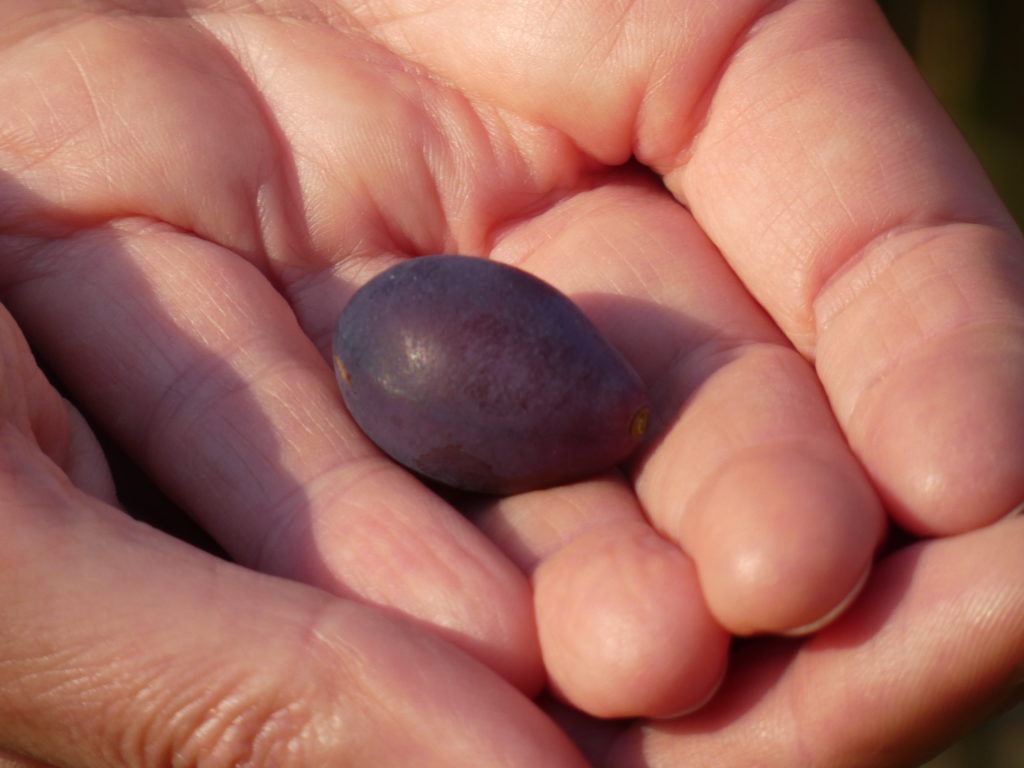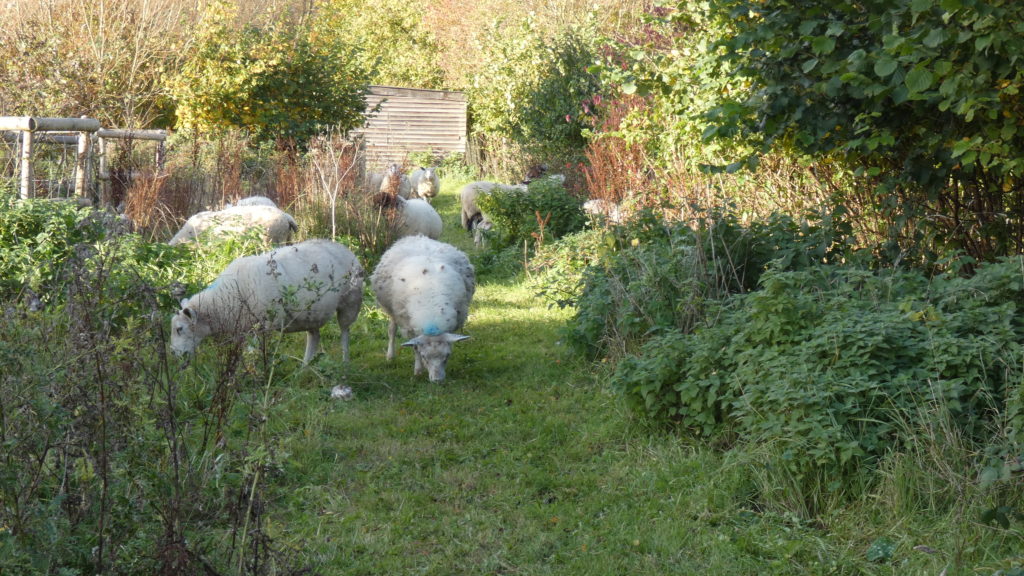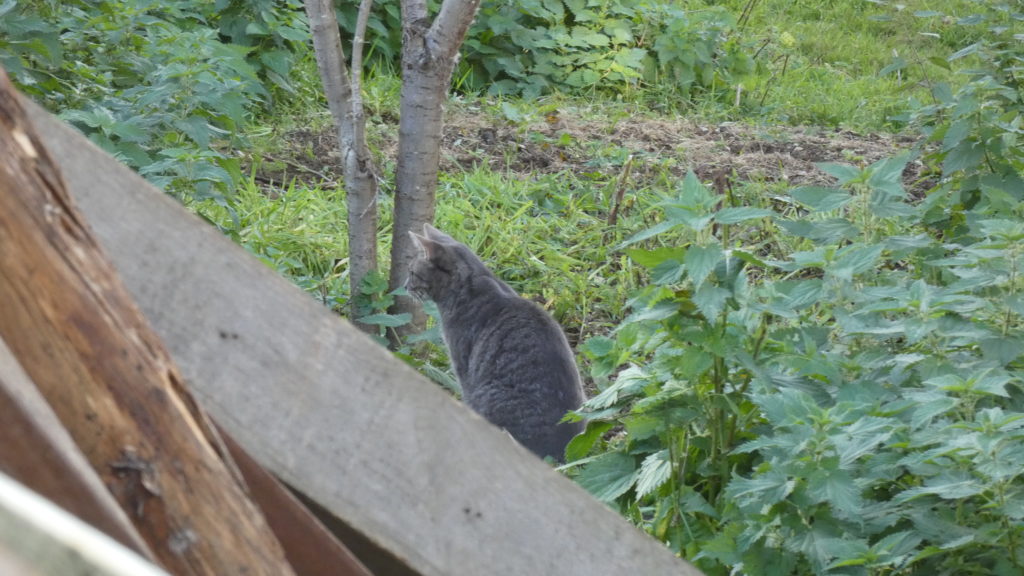The apple seeds are germinating like anything! I now have three or four boxes with five seeds each of the Gala apples, which have proved especially keen to get going. There are at least 10 more that need planting up – but every trip to the garden to put soil in pots is a bit of a big deal while it’s so cold! I’m managing to nip out and fill about two pots a day.
The Egremont Russets started to germinate a few days after being taken out of the fridge, so around 5th February, and I have got about 15 seeds in total germinated – pretty much all the ones I’d collected, which is an impressive rate. The Cox-like apples that I took from a doorstep in the nearby village of Aynho, and the Cox-like apples my friend Emma brought me from Scotland, are also sprouting and I have a couple of pots of those. The Discovery apples have also got going. Only the apples taken from the tree behind the forge at the Yorkshire Museum of Farming have yet to germinate. These are the ones that I was most doubtful of – the apples were picked very early in August, and the seeds at that time were soft and pale green. I kept the apples for a month or so and the last ones I ate had developed dark brown seeds. I still have hopes of them, after all they’ve only been out of the fridge for a week.
Apples are of course fully hardy, but it seems harsh to put them out right now with daytime temperatures around freezing, which is why they are lining up on the window sill for the time being.
The flooded meadow is now partly frozen over, thin ice that would not support a well-grown cat, but it’s quite dramatic when the sun is shining and the snow settling on the ice.
